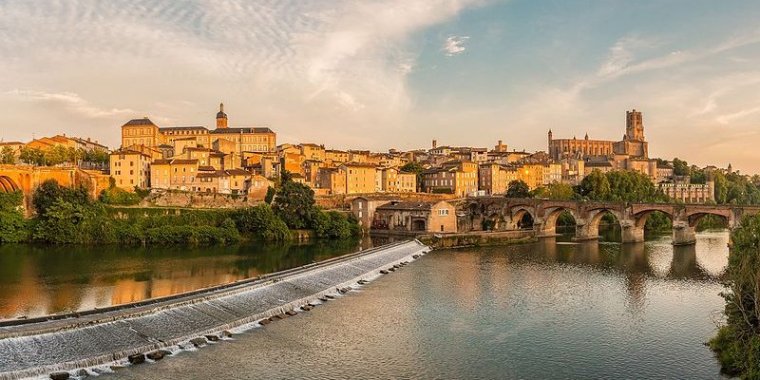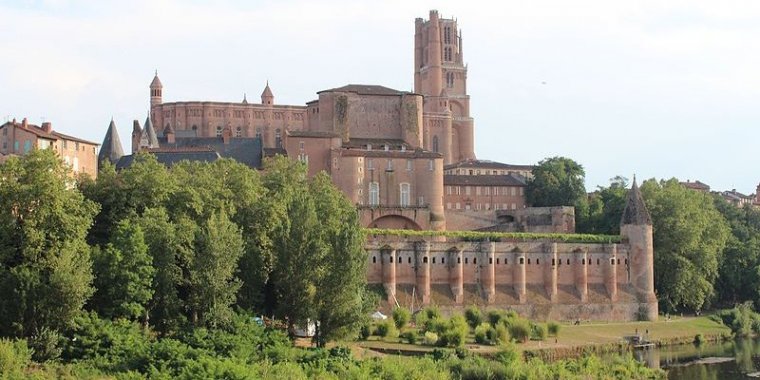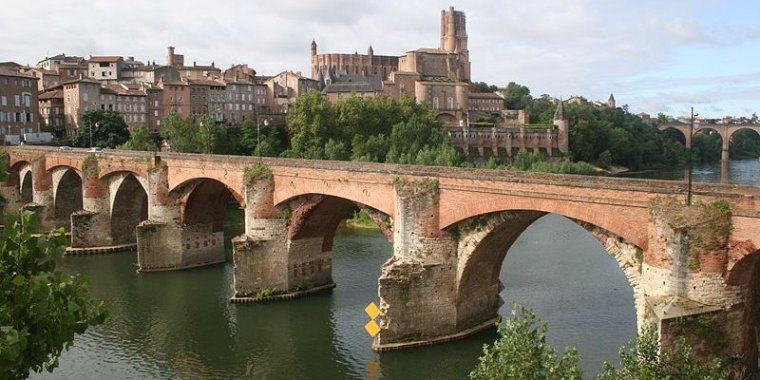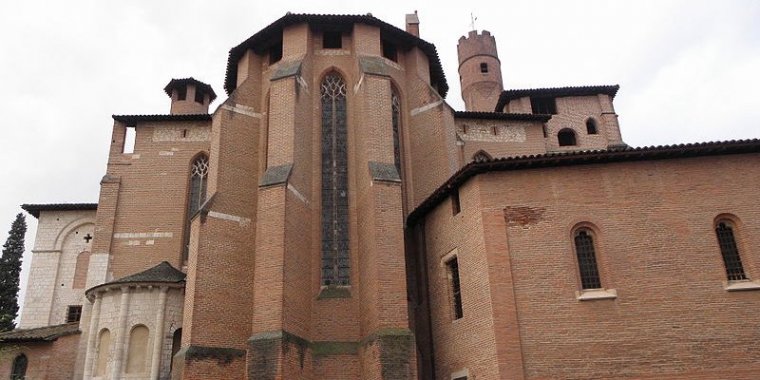| Published in Destinations |
Albi, France
Albi is probably best-known as the birthplace of the painter and illustrator, Henri de Toulouse-Lautrec. But at least equally relevant to travellers is the Cité épiscopale, an intact set of Mediaeval buildings surrounding the cathedral that was recognized as a UNESCO world heritage site.
Climate
Albi experiences a humid subtropical climate bordering oceanic climate. Like much of southwestern France, the summers tend to be warmer and the winters milder than most areas of similar classification. Substantial summer rainfall prevents its climate from being classified as Mediterranean.
Get in
By plane. The nearest airport is in Toulouse.
By train. Albi is served by two railway stations on the line from Toulouse to Rodez: Gare d'Albi-Ville and Gare d'Albi-Madeleine.
By car. The A68 motorway connects Albi with Toulouse (and Lyon N 88, future motorway).
What to See in Albi
• Cathédrale Sainte-Cécile. This beautiful and impressive fortified cathedral was designed to express a renewal in orthodox Catholicism after the Cathar heresy, which had been centred in the area and whose bloody suppression by the Inquisition was largely complete at the time construction began in 1287. The edifice is primarily a brick Gothic construction, but there is a door by Dominique de Florence (Dominick of Florence) and there are also Italian Renaissance frescoes on the ceiling. Its organ dates from the 18th century.
• Palais de la Berbie. Formerly the Bishops' Palace of Albi, now the Toulouse-Lautrec Museum, is one of the oldest and best-preserved castles in France. This imposing fortress was completed at the end of the 13th century. Its name comes from the Occitan word Bisbia, meaning Bishops' Palace.
• The Toulouse-Lautrec Museum houses more than 1000 works, including the 31 famous posters. This body of work forms the largest public collection in the world devoted to Henri de Toulouse-Lautrec who was born in Albi in 1864.
• Old bridge (Le pont vieux). Is still in use after almost a millennium. Originally built in stone (in 1035), then clad with brick, it rests on eight arches and is 151 m long. In the 14th century, it was fortified and reinforced with a drawbridge, and houses were built on the piers.
• Collégiale Saint-Salvy.
• Old windmills.
Eat
• Le Lautrec, 13-15 Rue Henri de Toulouse Lautrec, +33 5 63 54 86 55.
• La Fourchette Adroite, 7 Place de l'Archevêché, +33 5 63 49 77 81. (Wikivoyage, Wikipedia)
See also Albi in Pictures.
YOU MAY ALSO LIKE
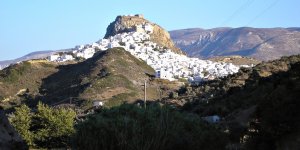



 If you own or manage a travel-related business such as a hotel, a bed-and-breakfast, a restaurant, a pub or a cafeteria, you can create a web page for your business for free on Titi Tudorancea Travel Info. » |
